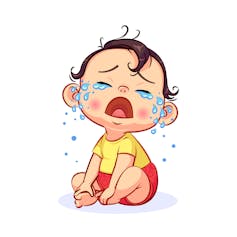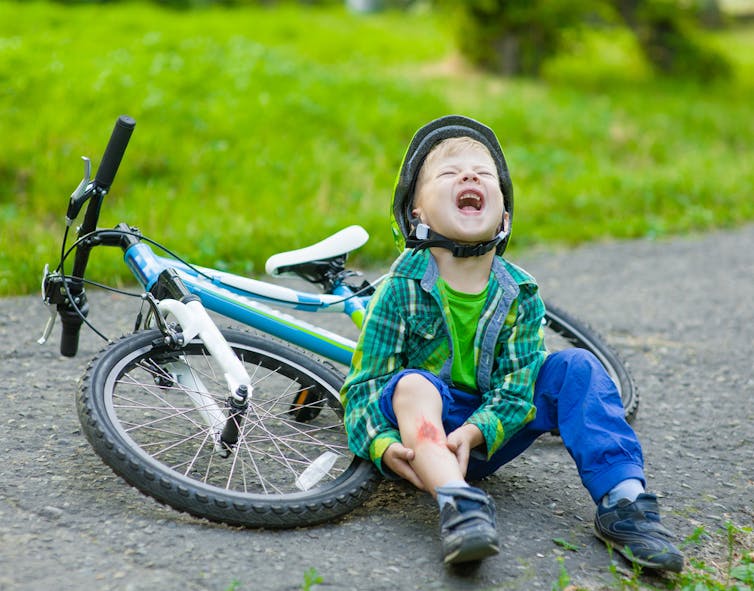No, crying doesn’t release toxins, though it might make you feel better… if that’s what you believe
/No, crying doesn't release toxins, though it might make you feel better... if that's what you believe

Crying is a big part of being a kid. As you grow older, you may find you’re crying less than during childhood and adolescence.
Studies show, on average, adult women tend to cry two to three times in a given month, and men only once. Although research is limited, it suggests crying frequency is highly influenced by social and cultural factors, our beliefs about the value of crying and how it is evaluated.
This is particularly exaggerated in many Western countries, where women report crying more often than those from non-Western countries. And in non-Western countries the difference in crying frequency between men and women is smaller. In some instances, it’s non-existent.

Scientists have long speculated why we cry and what happens in our bodies when we’re doing it. Some have suggested crying may be expelling chemicals that are built up during feelings of distress, or that crying causes a chemical change in the body that reduces stress or increases positive feelings. But we don’t actually know that much about crying and most of the studies out there are based on self-reporting.
Here’s what we do know.
Whether crying is good for you is subjective
The most pervasive idea about crying is that we do it because it’s helpful in some way; perhaps it provides relief or catharsis. But the research on this is mixed, with crying sometimes showing an improvement in mood and sometimes a worsening.
The longer it is since the last time you cried, or the more generally you think about your crying experiences as a whole, the more likely you are to consider crying as helpful. But if the crying event is fairly recent, people are less likely to report feeling better afterwards; they often report feeling much worse than before they cried.
On the other hand, people appear to cry to make themselves feel better, which is likely why we have an entire film genre (tearjerkers) dedicated to making us cry. Some have suggested crying is a self-soothing behaviour, so we cry because crying on its own is soothing.
Read more: Why bad moods are good for you: the surprising benefits of sadness
These authors also suggest crying could be a form of self-signalling, which means it’s like an alarm that lets us know something is wrong, forcing us to engage in other behaviours that help reduce feelings of distress, perhaps through distraction or meditation. We might otherwise seek out others to help us feel better in an act of social soothing.
Despite the overwhelming perception crying is useful at a personal level, most research suggests crying is more of a social phenomenon. Crying is an extremely effective signal to others that something is wrong and that you may be in need of help and comfort. Experiments and surveys show viewing images of crying faces compared to faces without tears not only make the face appear sadder, but also elicit greater sadness in the observer, more emotional support, less avoidance, and more overall helping behaviours.
Read more: Understanding others' feelings: what is empathy and why do we need it?
But before you go crying in front of others for support, just remember other studies show doing so may actually lead to feelings of shame and embarrassment.
What happens in our body when we cry?
Crying seems, at best, to do not much at all, and, at worst, to increase our physiological arousal. In our laboratory research we attempted to test whether crying reduces or interferes with the levels of the stress hormone (cortisol), and whether it may be able provide some other physical benefit, such as numbing, which could explain why we cry when we are in either emotional and physical pain.
We found crying had no effect on stress levels and people weren’t able to withstand pain more readily than those who did not cry. But those who cried were more in control of their breathing rate. This suggests people may hold their breath during crying in a bid to calm themselves down, and perhaps use the crying behaviour to initiate the calming strategy.
Read more: Curious Kids: Why do tears come out of our eyes when we cry?

Women do cry more often than men
There are exceptions, but generally women cry more than men. This difference emerges around the age of 11. Despite speculation these differences occur because of female development during puberty, no reliable link has been found between crying frequency and menstruation. The differences are more likely driven by decreased crying in boys during adolescence, rather than an increase among girls.
Perhaps the reason men cry less as they reach adolescence is because of the cultural expectations of masculinity. Men are “tough” and considered as having emotional reserve while being emotionally expressive is considered feminine. This may be why ratings of shame in crying are much higher among men compared to women.
Read more: How the desire for masculinity might drive some disadvantaged young men to substance abuse
Interestingly though, studies find men who cry in appropriate emotional contexts are rated as more likeable than those who don’t, and are not seen as more feminine.

Some studies show that men report crying more often over a death, a break-up, the death of a pet, and at farewells. However, women across cultures still report crying more frequently and often say they feel better after crying compared to men.
There is no right amount of crying
Crying is a personal process. Whether you cry, and how often, may be related to your culture, gender, and emotional expressiveness. Unless you are physically unable to cry, there is no such thing in the literature as crying either too much or not enough.
It is important to remember that crying is part of expressing an emotion, not necessarily part of experiencing an emotion.
Whether crying actually helps is also part of our personal judgement. Some say crying makes them feel worse than if they didn’t cry. Others may cry because they believe it is helpful and cathartic. However, if you feel you are crying more than you normally do, it might be useful to consider why this may be the case and if you need external support.
Read more:
The emotion centre is the oldest part of the human brain: why is mood so important?
![]()
Leah Sharman, PhD Candidate School of Psychology, The University of Queensland
This article is republished from The Conversation under a Creative Commons license. Read the original article.

